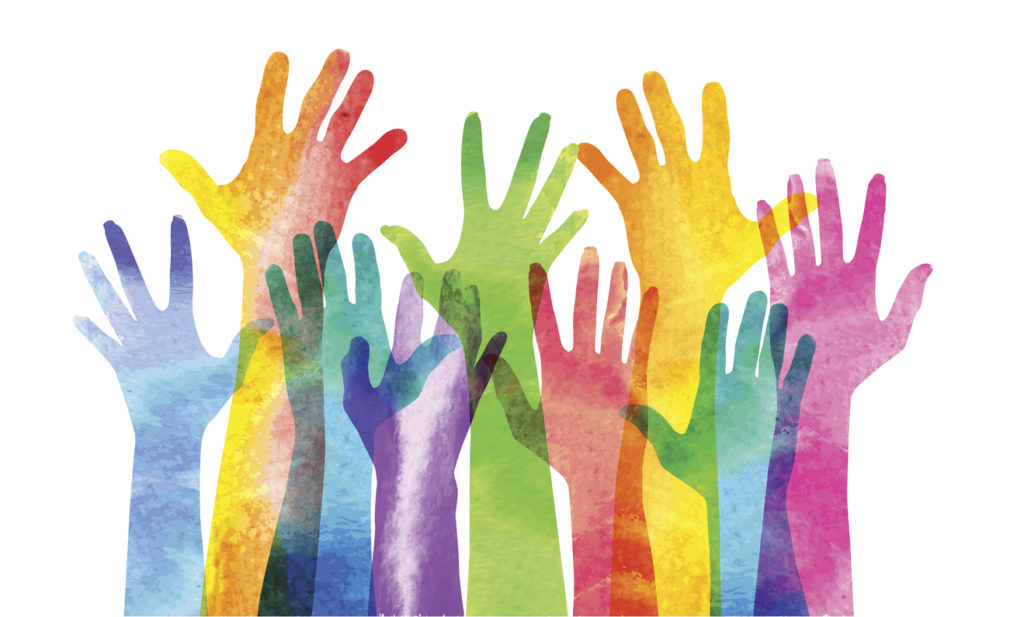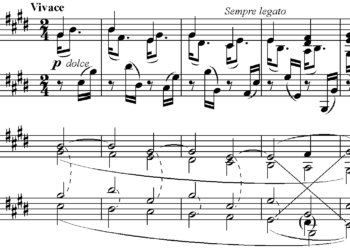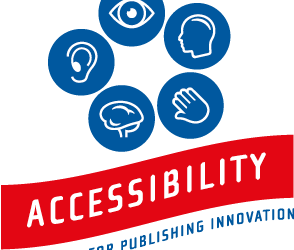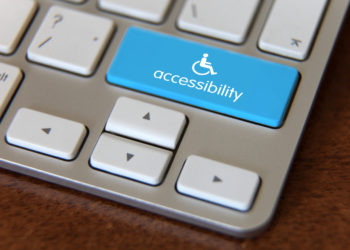Editor’s Note: Today is Global Accessibility Awareness Day (GAAD) 2018. The purpose of GAAD is to foster conversation, reflection, and learning about digital access and people with different disabilities in order to move towards greater inclusion in technology and its applications. We are pleased to welcome guest author Stephanie Rosen to share some thoughts about accessibility and inclusion for digital textbooks. Stephanie is Associate Librarian and Accessibility Specialist at the University of Michigan Library, where she promotes equitable access to library resources for all users, regardless of ability or background. She holds a PhD in English from the University of Texas at Austin, and brings a background in disability studies to library administration and digital education.
The scholarly communications community is very familiar with the many varied meanings of the word “free” and how those definitions help shape or derail discussions. With recent offerings of “inclusive access” textbooks, we now need to carefully distinguish between the varied meanings of the word “inclusive.”
A model for digital textbooks that bundles textbook costs into tuition and gives all students digital access on the first day of class — sometimes referred to as digital direct or digital direct access — has been recently going under the name “inclusive access.” This model “includes the cost of textbooks as part of a student’s tuition or course fee,” Christopher Ruel writes in The Wiley Network blog. The ideal outcome of this model is that every student has access to the required texts, without searching and shopping, and at a more affordable price.

But Nicole Allen, director of open education for the Scholarly Publishing and Academic Resources Coalition (SPARC), calls “inclusive access” a misnomer in an Inside Higher Ed article. “It’s the opposite of inclusive, because it is premised on publishers controlling when, where and for how long students have access to their materials, and denying access unless they pay for it,” Allen said. This new, inclusive model may create new problems of exclusion, even as it attempts to alleviate financial exclusion.
The “inclusive access” model may also create confusion relative to other “inclusive” initiatives, such as Inclusive Design and Inclusive Publishing. Inclusive Design, which is related to Universal Design but more focused on an ever-expanding user group, is perhaps best described by the Inclusive Design Research Centre at OCAD University. They espouse a design philosophy that recognizes human diversity, includes users in the design process, and aims for broad social benefit. Inclusive Design is expressly concerned with accessibility, disability, and social justice.
Inclusive Publishing is exemplified by the DAISY Consortium Initiative of the same name. The initiative and its resources are focused on “sharing knowledge to make publications accessible to all, including people with print disabilities.” One of its projects is ACE, the first automated EPUB Accessibility Checking tool. This tool runs a script and outputs a report indicating to what extent an EPUB file meets published accessibility standards — guidelines on content, code, and metadata that make electronic books discoverable and usable for readers with different disabilities and reading technologies.
“Inclusive access,” although it is always digital, is not always accessible to people with print disabilities. There are many initiatives to create accessible textbooks, but the majority of electronic resources are not accessible: not encoded to standards, lacking description of visual content, and lacking metadata that declares this. Students who rely on accessible copies of course content may be pushed into buying copies they can’t use under this model.
Although “inclusive access” is currently priced lower than textbook list prices, it is not always financially accessible. And, given strict publisher controls over the content, it is not free from restrictions. Rather, it comes with more restrictions than most electronic content purchased individually or licensed through library-vendor agreements.
Thus, “inclusive access” is inclusive in one sense, but not in many others. We need to carefully distinguish between the different meanings of “inclusive” — between what we mean when we say, “all-inclusive vacation package,” versus what we mean when we say, “diversity, equity and inclusion.” Perhaps we need a shorthand for this distinction, such as, “inclusive as in price or inclusive as in people.”
Or, we could simply rely on the word itself to do the job. We could say included when we mean access that is included in a package of services and products, and we could say inclusive when we mean access that is designed to exclude no one.
We could then say, without causing too much confusion, that there is more work to be done before included access becomes inclusive access.
Discussion
4 Thoughts on "Guest Post: Inclusive Pricing or Inclusive of All People? Understanding What’s “Inclusive” in Digital Textbook Publishing"
Good to highlight that ‘inclusive’ has different meanings for different audiences. This article helps us all widen our perspectives further. Thanks for a great post, and for referencing the initiative of the DAISY Consortium!
Some observations. I often teach part time at a school that provides on-line textbooks. Most of the students buy a hard copy. It seems a printed book is just easier to use as a learning tool!
As a book rep, I had many rental schools. Schools where the school rented the student his/her textbook at a fee. The problem was that most of the books were kept until they were used up and tattered beyond repaid and many were really out of date! Seems to me, that the inclusive model is just that and in both cases the student did not get to keep their book.
I guess the above applies to the cost of beer consumed by students – which far outweighs the cost of books. They only get to keep the beer for as long as it takes their kidney’s to process it!
The cost of beer analogy is terribly outdated today. The College Board estimates that students spend an average of $1200 per school year on textbooks. A 6-pack of cheap beer is about $6 (so, let’s say $1/beer) – anyone drinking 1200 beers would be drinking 30 beers/week throughout the school year. That rate of consumption equates to pretty much nightly binge drinking. Even doubling the cost of beer (say, for a nice 6-pack of craft beer) comes out to a lot more beer for $1200 than most students are drinking on a weekly basis. Textbooks are way more expensive than beer these days, in no small part because the rise in the cost of textbooks has far outpaced the consumer price index.
As has the price of tuition, and certainly for private undergrad schools, at a faster rate ( and in real dollar terms, far more punitive) than the average publisher price increase. I would also view reading time/text cost vs lecture time/tuition cost as indicators of value.



